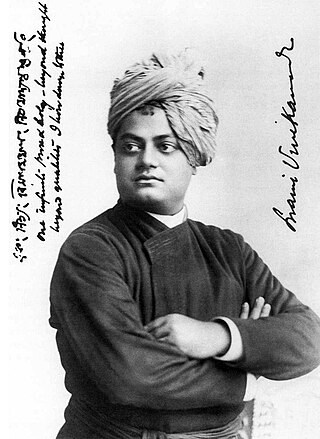
Swami Vivekananda, born Narendranath Datta, was an Indian Hindu monk, philosopher, author, religious teacher, and the chief disciple of the Indian mystic Ramakrishna. He was a key figure in the introduction of Vedanta and Yoga to the Western world, and the Father of modern Indian nationalism who is credited with raising interfaith awareness and bringing Hinduism to the status of a major world religion.
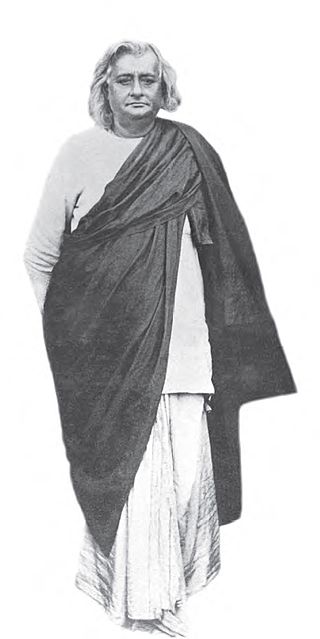
Swami Akhandananda (1864–1937) was a swami and direct disciple of Sri Ramakrishna, a 19th-century mystic. He was the third president of the Ramakrishna Mission.

Swami Shivananda (1854–1934), born Tarak Nath Ghosal, was a Hindu spiritual leader and a direct disciple of Ramakrishna, who became the second president of the Ramakrishna Mission. His devotees refer to him as Mahapurush Maharaj. Shivananda and Subodhananda were the only direct disciples of Ramakrishna to be filmed. He was a Brahmajnani. Shivananda introduced the celebration of the birthdays of his brother-monks. He was known to have laid the foundation stone of Shri Ramakrishna Temple at Belur Math, which was designed by Vijnanananda.
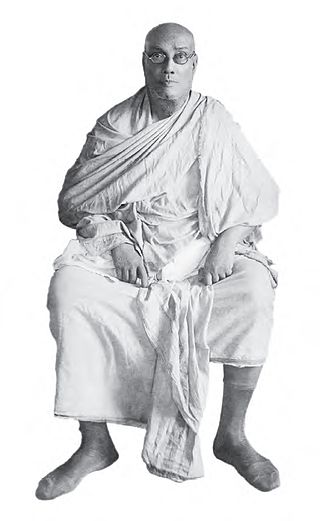
Swami Vijnanananda was an Indian monk of Ramakrishna order, born in an upper-class family near Dakshineswar, and was a direct disciple of Ramakrishna. He was an engineer and worked as the District Engineer in the erstwhile State of United Provinces, India. He was a great scholar of Sanskrit with expertise in religio-philosophical works, astronomy, civil engineering etc. He spent considerable time in Allahabad (Prayag) centre of Ramakrishna Math. He became the President of Ramakrishna Mission in 1937. It was under his presidency and direct supervision that the Ramakrishna Temple at Belur Math was constructed and consecrated.

Swami Bhuteshananda was born on 8 September 1901 at Somsar in Bengal Presidency. His premonastic name was Vijay Chandra. His father was Purna Chandra Roy and his mother Charubala Devi. In his student life, he met Jnan Maharaj. Under influence of his and some other spiritual young boys, he started to go to Belur Math frequently and he met many of the direct disciples of Sri Ramakrishna. He graduated from Government Sanskrit College where he mastered Bengali, English and Sanskrit. Due to his visits to the Math, one day he went to the Math to become Monk (Sannyasi), but as his studies was not completed, he was asked to come later. This made him leave his residence and he built a Shiva temple in Baghbazar (Calcutta) and lived there like a renunciate monk, practicing intense Tapasya. He was present during the funeral of Sri Sarada Devi, in December 1920.

Swami Yatiswarananda was a vice-president of Ramakrishna Order, whose headquarter is in Belur Math. He was a disciple of Swami Brahmananda, a brother disciple of Swami Vivekananda and a direct disciple and spiritual son of Ramakrishna. He served in Philadelphia propagating the message of Vedanta. He was the president of Bangalore centre of Ramakrishna Math. He founded an ashrama in Switzerland.
Swami Nikhilananda (1895–1973), born Dinesh Chandra Das Gupta was a direct disciple of Sri Sarada Devi. In 1933, he founded the Ramakrishna-Vivekananda Center of New York, a branch of Ramakrishna Mission, and remained its head until his death in 1973. An accomplished writer and thinker, Nikhilananda's greatest contribution was the translation of Sri Sri Ramakrishna Kathamrita from Bengali into English, published under the title The Gospel of Sri Ramakrishna (1942).

Swami Virajananda, born Kalikrishna Bose, was an initiated disciple of Sarada Devi and the sixth president of the Ramakrishna Order. Born as the son of Trailokyanath Bose and Nishadkalidevi, Virajananda was the first person to join the Ramakrishna Order after the direct disciples of Ramakrishna. In 1897, he was initiated into sannyasa by Vivekananda. From 1899 onward he served in Advaita Ashrama, Mayavati and became its president in 1906. He is recognised as a monastic disciple of Vivekananda.

Prabuddha Bharata is an English-language monthly journal of the Ramakrishna Order, in publication since July 1896. It carries articles and translations by monks, scholars, and other writers on humanities and social sciences including religious, psychological, historical, and cultural themes. It has a section of book reviews where important publications from university presses from around the world are reviewed. It is edited from Advaita Ashrama, Mayavati, Uttarakhand, and published and printed in Kolkata. Prabuddha Bharata is India's longest running English journal.

Advaita Ashrama, Mayavati, is a branch of the Ramakrishna Math, founded on 19 March 1899 at the behest of Vivekananda, by his disciples James Henry Sevier, and Charlotte Sevier. Today it publishes the original writings of Vivekananda. As an ashram dedicated to the study and practice of Advaita Vedanta, no images or idols are worshipped there, not even of Ramakrishna; and no images were kept in the premises according to the Ashram ideals set by Vivekananda.

Adbhutananda, born Rakhturam, was a direct monastic disciple of Ramakrishna, a Yogi of nineteenth century Bengal. He is familiarly known as Latu Maharaj among the followers of Ramakrishna. Adbhutananda was the first monastic disciple to come to Ramakrishna. While most of Ramakrishna's direct disciples came from the Bengali intelligentsia, Adbhutananda's lack of formal education made him unique amongst them. He was a servant boy of a devotee of Ramakrishna, and he later became his monastic disciple. Though unlettered, Adbhutananda was considered as a monk with great spiritual insight by Ramakrishna's followers, and Vivekananda regarded him as "the greatest miracle of Ramakrishna".

Sister Gargi, born Marie Louise Burke, was a writer and an eminent researcher on Swami Vivekananda, and a leading literary figure of the Ramakrishna-Vivekananda movement. Gargi was introduced to the Ramakrishna-Vivekananda movement in 1948 by Swami Ashokananda. She is known for her six-volume work, Swami Vivekananda in the West: New Discoveries. Her New Discoveries are considered as indispensable for Swami Vivekananda research.
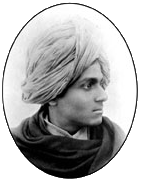
Swarupananda was a direct monastic disciple of Vivekananda and the first president of the Advaita Ashrama, set up by Vivekananda in 1899 at Mayavati, near Champawat. The ashram is a branch of the religious monastic order, Ramakrishna Math, also set up by Vivekananda on the teachings of his guru Ramakrishna.
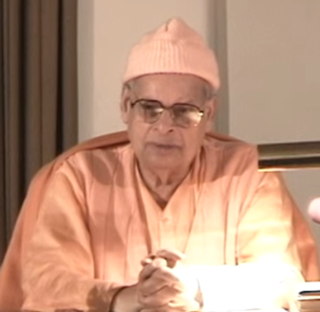
Swami Swahananda was a senior monk of the Ramakrishna Order of India, and the minister and spiritual leader of the Vedanta Society of Southern California from 1976 to 2012. He also led the Vivekananda Retreat, Ridgely, and the Vedanta Center of Greater Washington, DC. He joined the Ramakrishna Order in 1947 and received sannyasa, full monastic ordination, in 1956.

Josephine MacLeod was an American friend and devotee of Swami Vivekananda. She had a strong attachment to India and was an active participant in the Ramakrishna Vivekananda movement. She was given the nicknames "Tantine" and "Jo Jo" by Vivekananda. She considered Swami Vivekananda to be her friend and helped him with his finances. MacLeod was not a sanyasin, unlike many others such as Sister Nivedita or Sister Christine. She was instrumental in spreading Vivekananda's message on Vedanta in the West. She made many contributions to the initial and the later phases of the development of the order of Ramakrishna and Vivekananda. She was a contributor to many causes espoused by Sister Nivedita, the most famous disciple of Vivekananda, including that of contributing financially towards the development of the Indian National Movement especially in Bengal and elsewhere in India.

Charlotte Sevier, also known as Mrs. Sevier, was a direct disciple of Swami Vivekananda and was British in origin. She, together with her husband James Henry Sevier established the Advaita Ashrama in Mayavati, a branch of the Ramakrishna Order, in the Himalayas.

Swami Prakashananda (1874–1927) was a monastic disciple of Vivekananda and a monk of the Ramakrishna Order who played a major role in propagating and promoting the Vedanta philosophy and Vivekananda's message in India and America. He came to the US in 1906 to serve under Trigunatitananda, a direct disciple of Ramakrishna at the Vedanta Society of San Francisco, later renamed as Vedanta Society of Northern California, and later became its president.
Vimalananda (1872–1908) was an Indian spiritual writer who was one of the monastic disciples of Vivekananda and an early monk of the Ramakrishna Order. He was involved in the publication of Prabuddha Bharata. He was actively involved in running day-to-day operations of the Advaita Ashrama at Mayavati during the early days of the Ashrama. He also inaugurated the Ramakrishna Math at Ulsoor in Bangalore in 1906. He died in 1908 at the Mayavati Ashrama.

Swami Tathagatananda, was a Hindu monk of the Ramakrishna Math and Ramakrishna Mission. He was the Minister and Spiritual Leader of the Vedanta Society of New York from November 1977 to June 2016, which was the first Vedanta Society in the United States, founded my Swami Vivekananda in 1895.
Swami Satprakashananda was an Indian philosopher, monk of the Ramakrishna Order, and religious teacher.

















